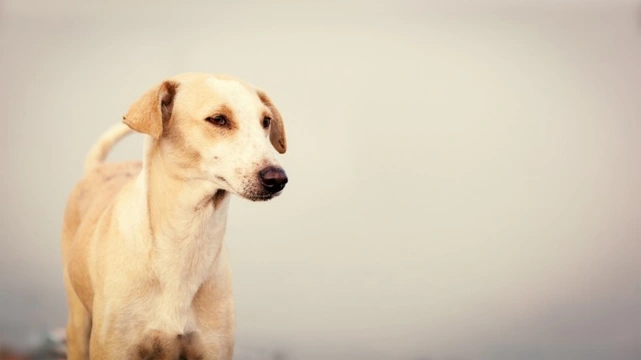
What is a landrace dog or landrace dog breed?
There are well over 200 dog breeds and types either formally or widely recognised in the UK, and many others in other parts of the world too, some of which the average UK dog lover will never have even heard of and will probably have go their whole lives without seeing in the flesh!
The very concept of “dog breeds” at all is ultimately a human creation, and a recent one at that. During the Victorian era, broad dog type groupings such as terriers, gundogs and toy dogs were further narrowed down into more uniform splits based on specifics of their looks and temperaments.
However, in different regions of the world, different types of dogs that share a high degree of uniformity with each other but uniqueness from dogs in other regions and areas evolved too, due to a combination of the environment, culture and domestication norms in said region, but without deliberate selective breeding on the part of humans.
We call these landraces, landrace dogs or even landrace dog breeds, although the “breed” part of the term technically contradicts the true meaning of the term landrace, as the correct use of the term “dog breed” itself implies deliberate human intervention.
In this article, we will explain what a landrace dog or landrace dog breed is in more detail, and outline the difference between a naturally occurring landrace and a formally developed dog breed. Read on to learn more.
What is the definition of a landrace?
The term “landrace” doesn’t just apply to dogs, and is in fact used across many species including cats, cattle, and sheep.
A landrace dog is one that has evolved in a certain local area over time and whose evolution has been influenced by that local environment, factoring in all manner of things such as the climate and weather, presence of humans and how humans view and interact with the species, availability of food, local predators, and much more.
Such factors help to dictate why a landrace dog from a hot climate may have a short, fine coat whilst one from a harsh, cold region will have a very thick, multi-layered insulating coat. Dogs that live by and spend a lot of time in water, and particularly, those that worked alongside humans on water, might have webbed feet.
Landrace dogs are relatively uniform with and have obvious physical similarities to the other dogs in the same population, but tend to have more variety in terms of individual physical and temperament traits than are found in dogs of the same formal breed.
Landraces have formed the basis of many modern dog breeds, and a very few true landraces are also recognised as pedigree breeds too in some countries; and this also works in reverse, ie, abandoned, stray or feral dogs from formal breeds could theoretically form their own landraces after a few hundred years of evolution.
How landraces and dog breeds differ
As mentioned, a few landraces are also recognised as dog breeds in some counties, but these two terms are not only not interchangeable, but are almost always mutually exclusive too.
This is because a landrace is naturally occurring and has evolved without selective breeding on the part of humans. However, the evolution of a landrace can and often is influenced indirectly by domestication and the presence of humans; such as in terms of the availability of food for the dogs due to the presence of a nearby human population, or trade-offs of living near to people, such as the dogs keeping pest populations low and receiving food for this in their turn.
A dog breed, on the other hand, is a specific type of dog that has a high level of uniformity within the group and that is deliberately bred by humans to achieve certain traits, and said uniformity within them.
Landraces breed with other dogs of the same type and/or other types more or less unchecked, and certainly without humans choosing mating partners and preventing other matings. For dogs of formally recognised dog breeds, members of said breed only retain membership of that breed through subsequent generations if the parent dogs were mated with other dogs from the same breed group.
Landraces breed freely without being bred as members of a breed registry, albeit local records may be kept of these natural mating results in some instances.
Landraces, dog breeds and dog types
To further confuse matters, some breed names, common dog type names and landraces have some crossover too!
Case in point, the collie. The term “collie” used alone describes a dog type; a fairly broad and diverse group of dogs that share a number of common traits but not a huge and broad degree of uniformity.
However, there are then collies that are also formal dog breeds, including the Border collie and rough collie.
But there are also landrace collies too; like the Scotch collie, a term that is only informally used today; and which in turn, forms the landrace ancestry of both the formal rough collie and smooth collie breeds!
Most UK dog lovers would be hard-pressed to name any dog landraces, and there are in fact only a handful recognised as extant as true landraces today; but some of the relatively better-known landraces (whether you knew they were landraces or not) are the dingo, the Indian pariah dog, and the Basque shepherd dog.



